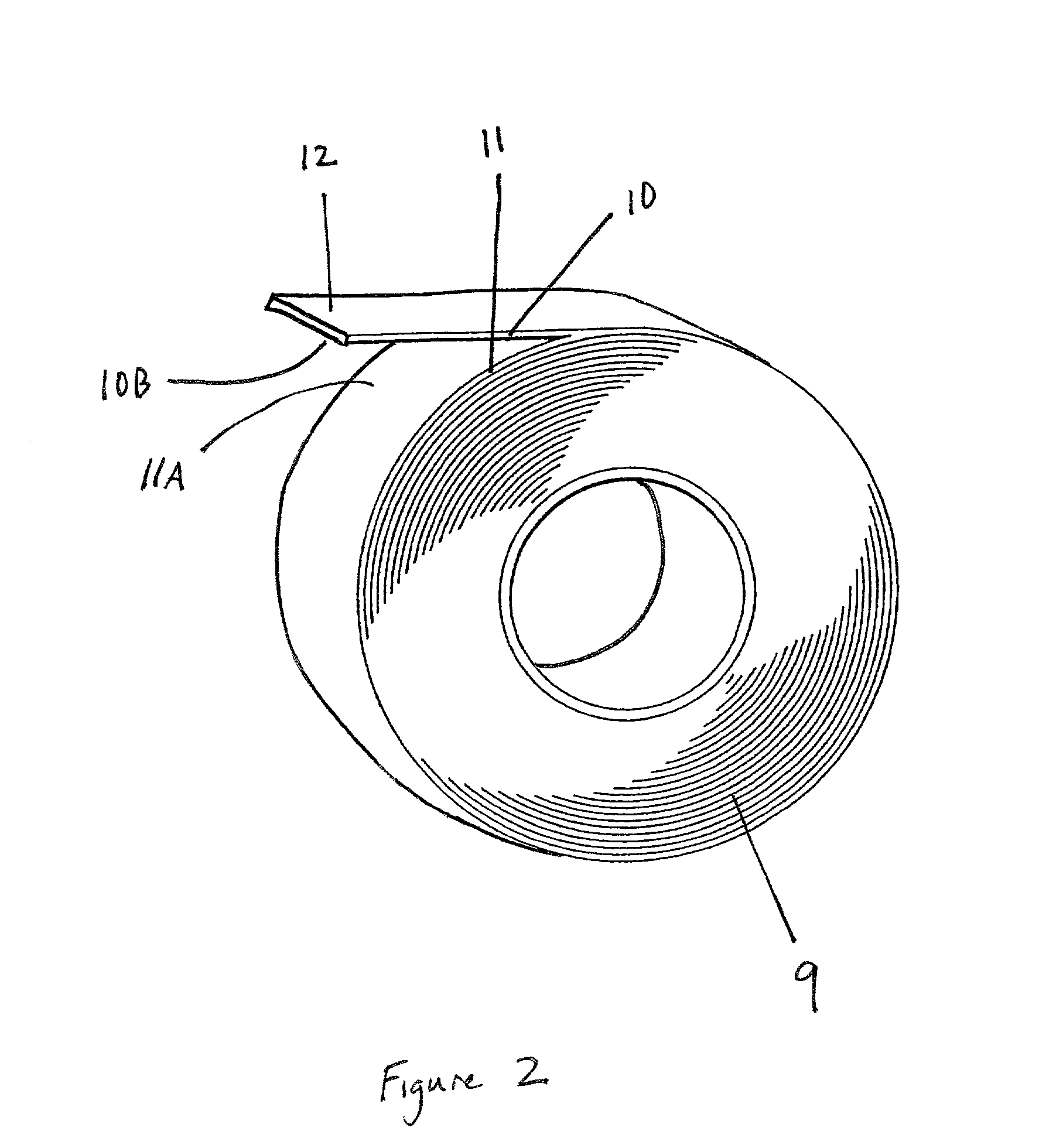High-speed web-splicing tape and method of use thereof
a websplicing tape and high-speed technology, applied in the direction of film/foil adhesives, instruments, photosensitive materials, etc., can solve the problems of disrupting and damaging the machinery of industrial applications, labor intensive and time-consuming, and affecting the performance of so as to prevent damage to the reel or the machinery involved, the effect of sufficient strength
- Summary
- Abstract
- Description
- Claims
- Application Information
AI Technical Summary
Benefits of technology
Problems solved by technology
Method used
Image
Examples
Embodiment Construction
[0036] Referring to the figures, details of the high-speed web-splice tape and method of use will be set forth. FIG. 1A-1B depict a cross sectional view of the novel tape. First adhesive 1 has a bottom surface 1B and top surface 1A. Top surface 1A is covered by breakaway-coating 2. Release-coating 3 is affixed to breakaway-coating 2 along an interface 2A. Substrate 4 has a first surface 4A and a second surface 4B and is secured to release-coating 3 along second surface 4B. Second adhesive 5 has an upper surface 5A and a lower surface 5B which is adhered to first surface 4A of substrate 4. Upper surface 5A is adhered to release liner 6. Release liner 6 has a mechanical weakness 7 which is slit running parallel to the edges of the tape. Mechanical weakness 7 divides release liner 6 into first portion 6C and second portion 6D. First portion 6C is secured to proximal portion 5C of second adhesive 5. Second portion 6D is secured to distal portion 5D of second adhesive 5. First adhesive 1...
PUM
| Property | Measurement | Unit |
|---|---|---|
| Thickness | aaaaa | aaaaa |
| Thickness | aaaaa | aaaaa |
| Thickness | aaaaa | aaaaa |
Abstract
Description
Claims
Application Information
 Login to View More
Login to View More - R&D
- Intellectual Property
- Life Sciences
- Materials
- Tech Scout
- Unparalleled Data Quality
- Higher Quality Content
- 60% Fewer Hallucinations
Browse by: Latest US Patents, China's latest patents, Technical Efficacy Thesaurus, Application Domain, Technology Topic, Popular Technical Reports.
© 2025 PatSnap. All rights reserved.Legal|Privacy policy|Modern Slavery Act Transparency Statement|Sitemap|About US| Contact US: help@patsnap.com



